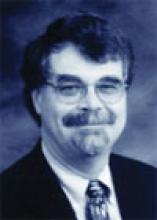Sometimes I envy pediatricians and geriatricians. Although they face challenges caring for infants or demented elders who can’t describe their aches and pains, these physicians need to know about and treat only one age group. As general psychiatrists, we must diagnose and treat every mental disorder from cradle to grave.
To help you accomplish that task, this month’s Current Psychiatry covers the age spectrum from early childhood to late life with articles on autism, adolescent depression, schizophrenia, sexual addiction, and late-life psychosis. I’ve recently treated every problem covered in this issue—with the exception of autism—and I suspect you have, too. And although I have not treated autistic patients lately, I often am asked questions and prefer to answer knowledgably about the status of diagnosis and treatment of that difficult condition.
From the autism article by David Posey, MD, and Christopher McDougle, MD, I learned that autism and other pervasive developmental disabilities are more common than was previously believed. I had thought maybe I was just hearing about them more frequently. I also understand for the first time the diagnostic points that distinguish autism from Rett’s and childhood disintegrative disorders.
The article on adolescent depression by Ann Wagner, PhD, and Benedetto Vitiello, MD, of the National Institute of Mental Health reminded me of the similarities and differences between adult and adolescent mood disorders. I knew that depression in teens can be persistent, but I had not realized that as many as one-third of depressed teens require second-step approaches or combination therapy. It’s good to know that the NIMH is funding studies of SSRI antidepressants plus cognitive-behavioral therapy for adolescents with major depression.
The article on the diagnosis of sexual addiction by Steven Mahorney, MD, was a revelation. Prior to reading the article, my understanding was closer to the mainstream view, as set forth by Neal Dunsieth Jr., MD, in his commentary. I realize I may have been missing this diagnosis because I was not looking for it, and I did not have a good idea of how to treat it. Now, I can conceptualize sexual addiction in useful behavioral and psychological terms.
From the article on late-life psychosis by Renee Snow, MD, and Sumer Verma, MD, I learned that 13% of patients are diagnosed with new-onset schizophrenia after age 50 and 7% after age 60. I also learned that one-half of all patients with vascular or mixed dementias have psychotic symptoms. These numbers are much higher than I had imagined, but fortunately the article’s update on diagnosis and treatment helped me prepare to see more of these patients.
So, as usual, Current Psychiatry has helped me with the daunting task of keeping up with the diseases and treatments of our patients throughout the life span.
Speaking of developmental life stages, this infant—Current Psychiatry—is now 6 months old. It is sitting up and drinking from a cup and everything (not bad for a 6-month-old, eh?). Send me an email (hillarjr@email.uc.edu) if there are other milestones you would like our publication to attain.


